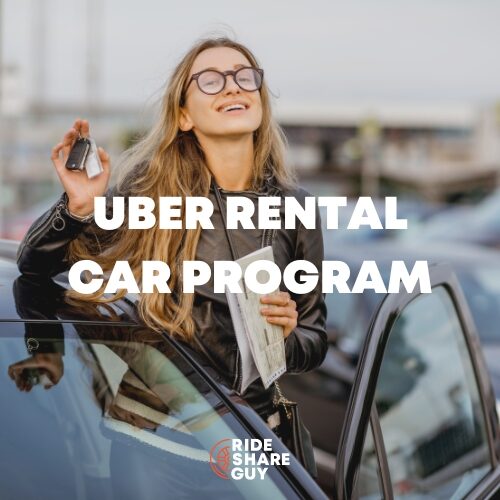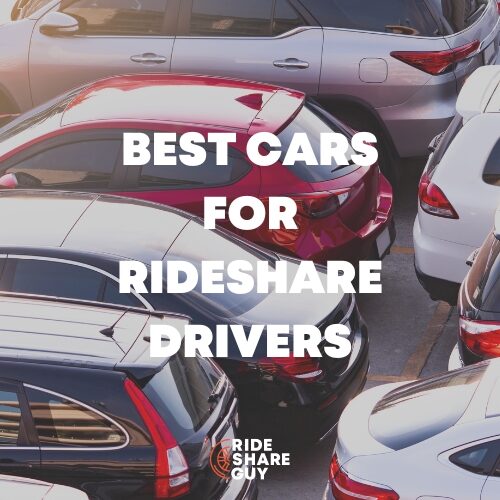What if we told you you could give yourself a $3-per-hour raise right now? You can if you start using one of the best electric vehicles for Uber drivers or an EV for your gig work, be it driving for Uber or Lyft or delivery driving.
The amount you save using electricity instead of gas really can boost your earnings by that much! EV champion and Rideshare Guy contributor Gabe Ets-Hokin shares the best electric vehicles for Uber drivers below.
Ten or even five years ago, it would be a tough sell to get me to try to use one for rideshare work. That’s because making a living wage in this industry requires a variety of careful strategies, and driving an overpriced vehicle with a limited range and long recharging times isn’t one of them.
Times have changed, and we have more choices in this space. If you’ve done the research and think an EV – or plug-in hybrid-electric (PHEV) – is a good match for your driving strategies and lifestyle, read on: I’ve got some choices for you.
9 Best Electric Vehicles for Uber Drivers
Here are the best electric vehicles for Uber and Lyft drivers to maximize their earning potential in 2024:
- Tesla Model S
- Chevy Bolt EV
- Nissan Leaf
- Pacifica PHEV
- Volkswagen ID-4
- Hyundai Kona Electric
- Kia Niro EV
- Tesla Model 3
- Hyundai Ioniq 6
1. Tesla Model S
The Tesla Model S is a ground-breaking vehicle, their first mass-produced long-range EV. It’s also considered a luxury vehicle for purposes of Uber Comfort or Lyft Black and may even be eligible for Uber Black.
Look around, and you might find one for under $25,000. It’ll likely have six figures on the odometer and will need to have some issues sorted, but fear not: these cars were built to last a lifetime, and some are exceeding a half-million miles.
You’ll enjoy a huge network of fast-charge stations, and you’ll impress your passengers, most of whom will have never ridden in a Tesla before.
You’ll also enjoy 320-405 miles of range (you can fast charge up to 200 miles in 15 minutes) as well as handling and acceleration on par with $80,000 European-built luxury sedans.
One last thing: if you find a pre-2017 and buy it from a private seller, not a dealer, the car may even have transferable free Supercharging for life. That’s right, unlike other cars, the Tesla can actually pay for its own fuel—let’s see a Mercedes do that.
Free gas aside, life with an aging EV may not be the most economical or practical decision, but you will be driving a special and memorable car.
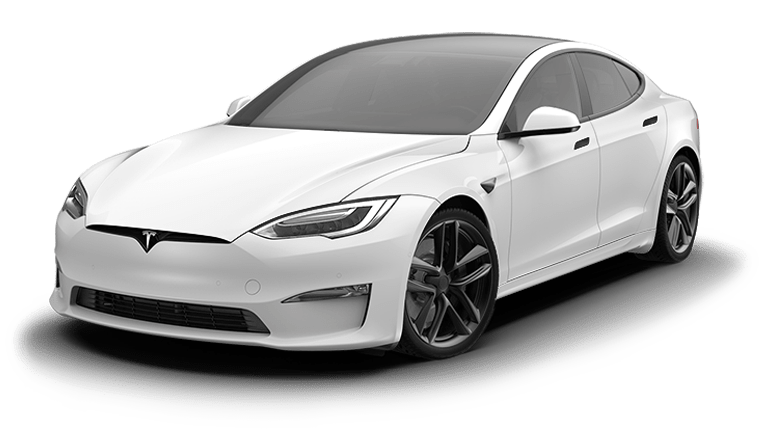
2. Chevy Bolt EV
If you’ve read some of my previous articles, you’ll know I’m a fan of the Bolt EV. That’s because it checks almost all the boxes when it comes to a rideshare or delivery vehicle:
- Inexpensive cost of entry
- Cheap to maintain
- Easy to get in and out of
- Surprisingly roomy
- Tough, durable interior
In 2023, the price ranges from $26,500 to $27,800, so it’s very affordable.
It’s not all roses and lollipops with the Bolt. It has a small trunk, is speed limited to 91 mph, and the fast charger is just 65 kWh, which means it takes over an hour to juice up to 200 miles on a DC fast charger.
But my experience as a rideshare EV driver is you can work about six to eight hours if you start your shift with a full battery, you drive conservatively, and it’s not too cold (which can sap range up to 40 percent).
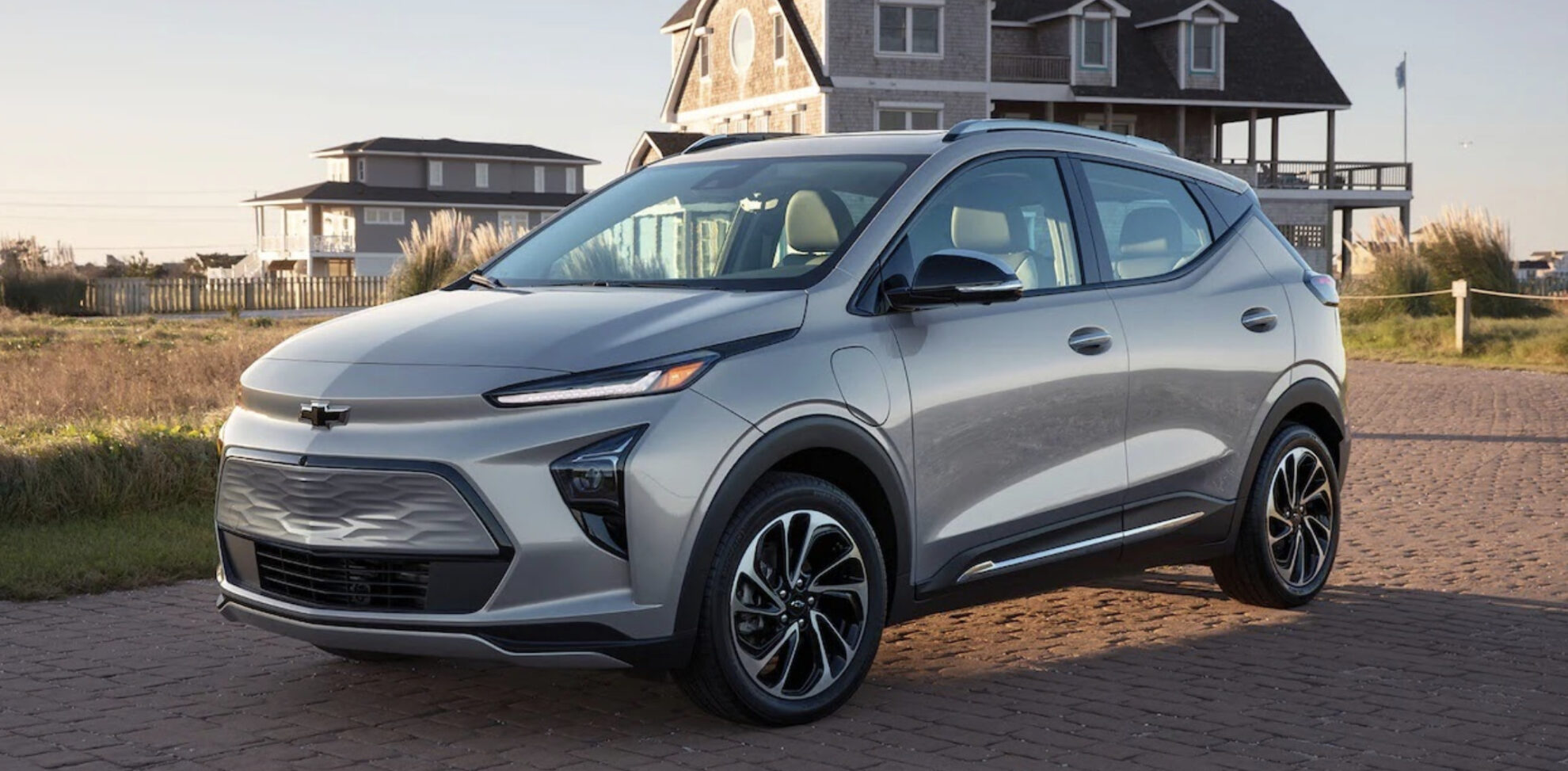
3. Nissan Leaf
If your Uber style is lots of short trips (or you mainly do delivery) and you usually take a break during the day, you may have some success with a used Nissan Leaf. The Leaf is the most prolific EV in North America.
The way to go would be to find a clean, low-mile 2016 or newer model, with the 30 kWh battery. It’s a more durable design and offers 107 miles of range.
You can typically find these for under $10,000, or splurge and get a 2018 or newer with the 40 kWh pack and 150 miles of range. That should last six or more hours in city driving, and the car’s CHAdeMO fast charger should get you back on the road with an 80-percent charge after 40-60 minutes.
If you want more than 200 miles of range in a Nissan, you’ll spend over $20,000 for a used “Plus” version.
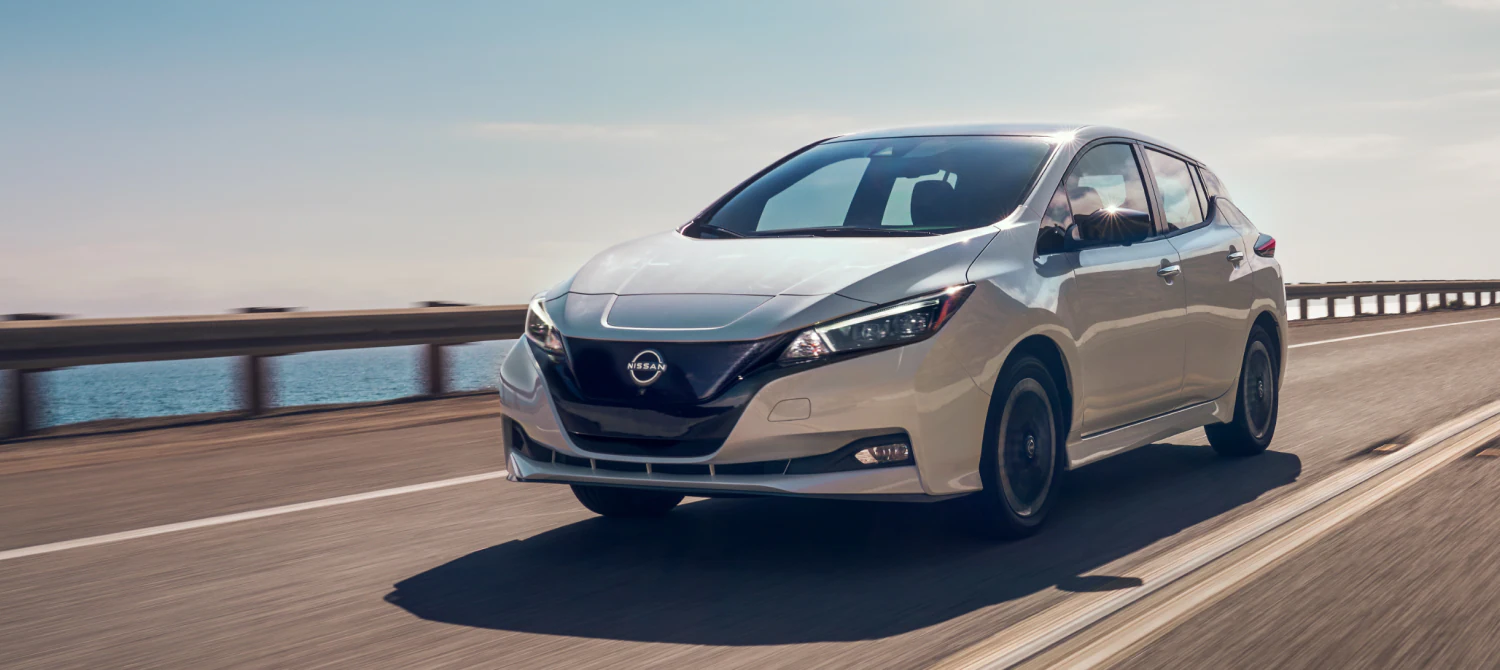
4. Pacifica PHEV
If you want to drive XL and not burn gas, you pick up a used Chrysler Pacifica PHEV for around $30,000.
It’s spacious for 7 people, gets great fuel economy – over 80 mpg if you keep it charged and just drive short trips – and is packed with luxury, infotainment, and safety features.
You can also drive it 32 miles on battery alone. When the electrons run dry, the big gas tank allows another 550 miles of hybrid-mode range at about 30 mpg.
Like most Chrysler-Fiat products, build quality and reliability is below average, so get an extended warranty.
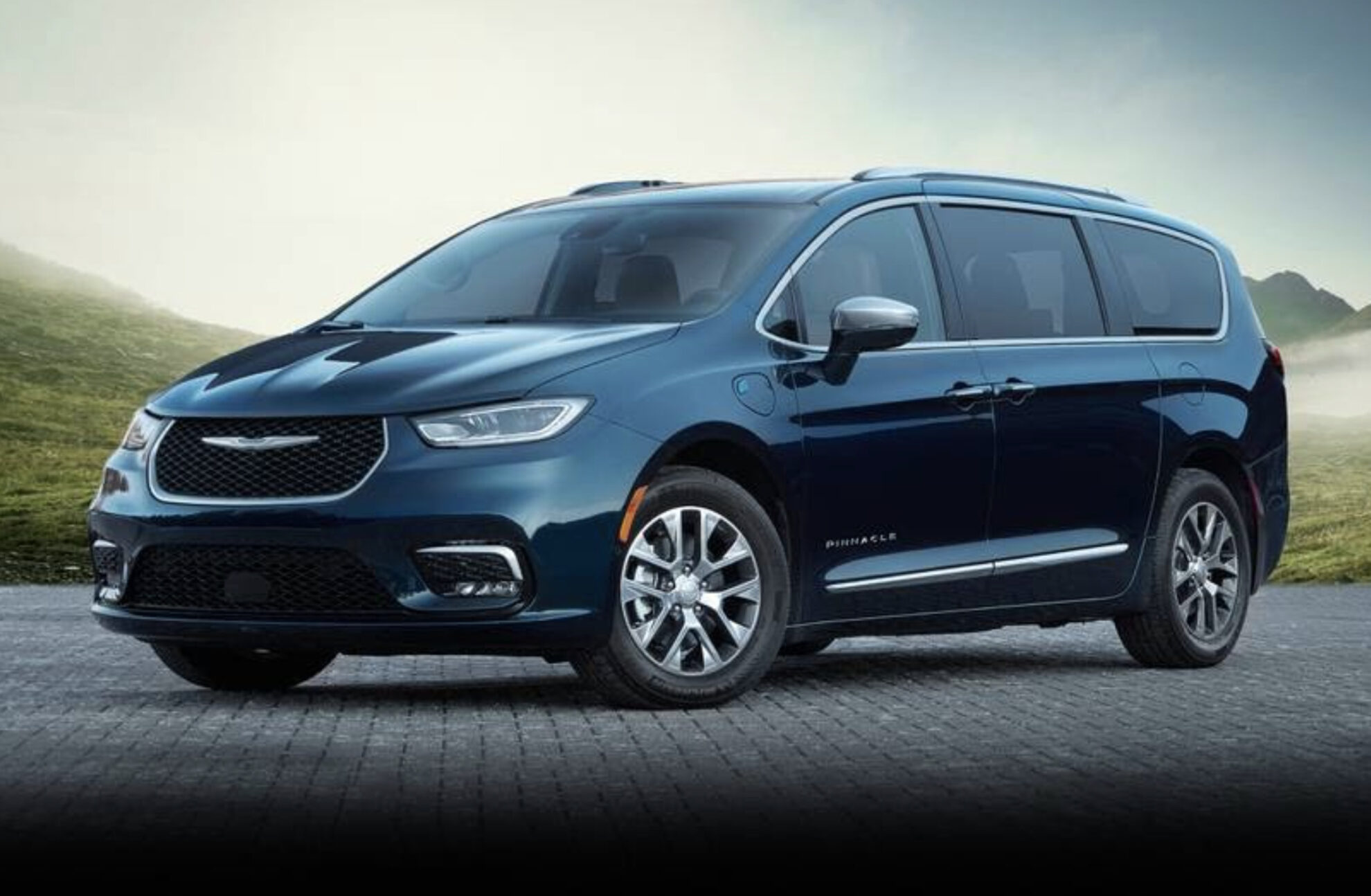
5. Volkswagen ID-4
Volkswagen’s ID-4 should be attractive to rideshare drivers, at least the well-heeled ones. It’s spacious and easy to get in and out of, it has a nice interior and infotainment system, and I thought it was reasonably fun to drive.
Its fast-charging speed isn’t quite as fast as the Tesla’s or Ford’s, but it’s more than twice as fast as the Bolt. VW claims it’ll charge from ten to 80 percent in 30 – 36 minutes.
Keep in mind EV batteries get too hot to sustain high fast-charge speeds past about 80 percent charge, which means it could take an hour or more to cram that last 20 percent into your battery, no matter the brand – perhaps the worst part about remote charging.
In addition to having a lot less power and a lot more weight, making for less responsive handling, the ID.4 base trim is pretty spare compared to the Tesla, so if you equip them like a Model 3 Standard Range Plus, with leather-like upholstery, keyless ignition, glass roof, etc, they’re about the same price as the Tesla.
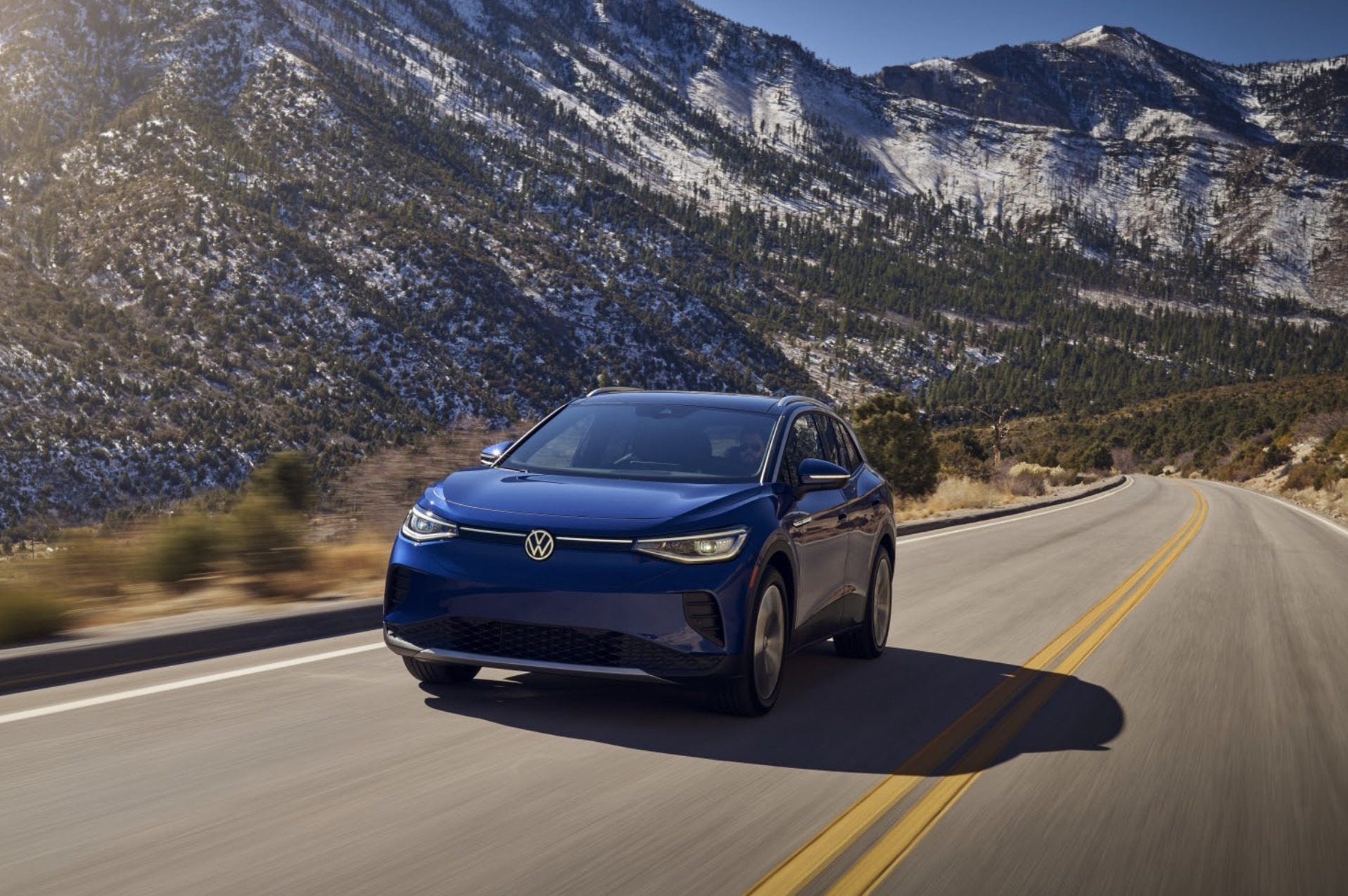
6. Hyundai Kona Electric
The Hyundai Kona Electric is a practical and versatile electric vehicle option for Uber drivers. It has a range of up to 319 miles on a single charge, which is quite impressive.
The Kona Electric also has fast charging capabilities, with the ability to charge to 80% capacity in as little as 41 minutes.
The vehicle is spacious and comfortable, with seating for up to five passengers. It has a sleek and modern design, with amenities such as a 12.3-inch touchscreen infotainment system and a rearview camera.
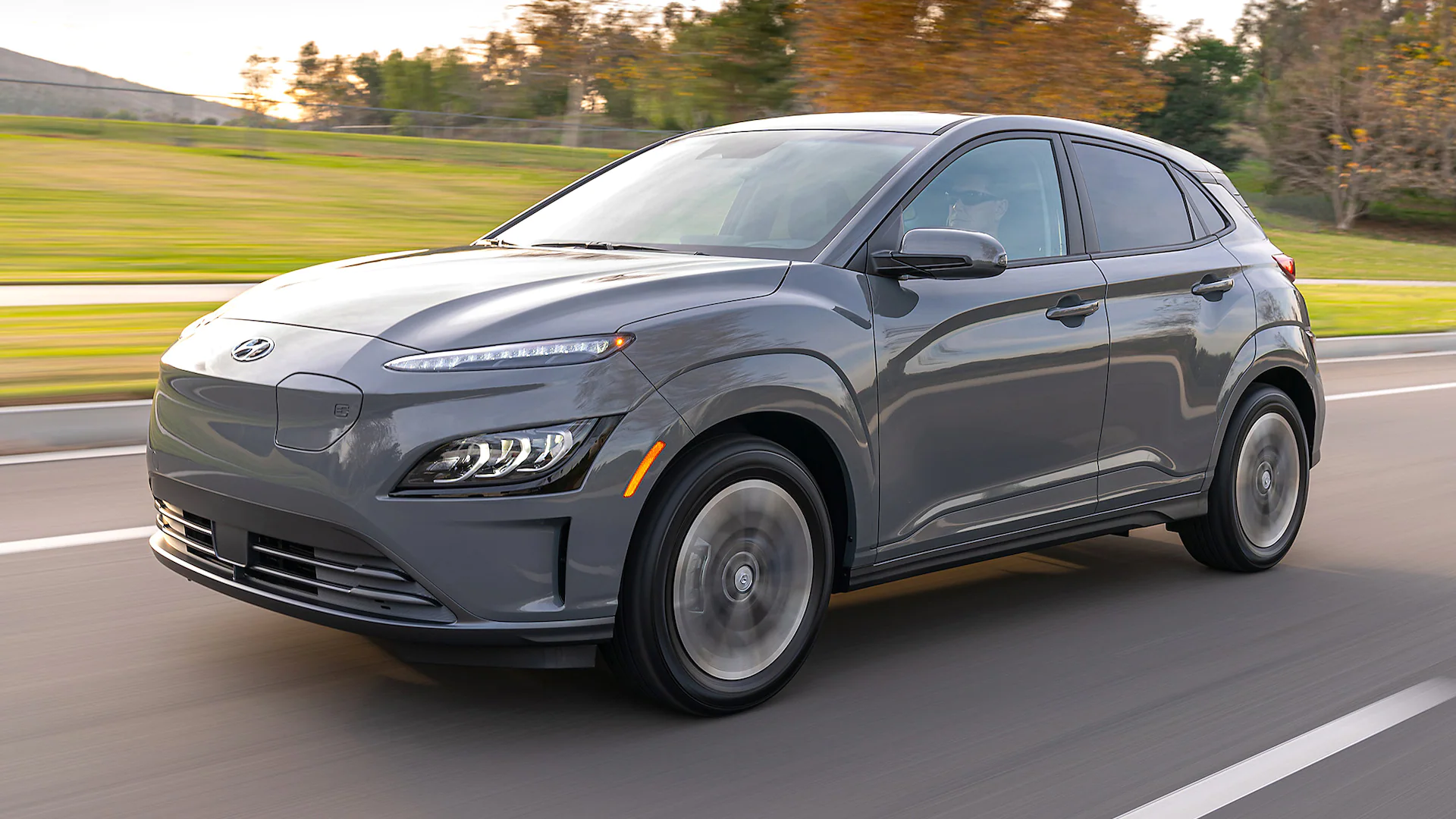
7. Kia Niro EV
The Kia Niro EV is a practical and affordable electric vehicle option for Uber drivers. It has a range of up to 253 miles on a single charge.
The Niro EV also has fast charging capabilities, with the ability to charge to 80% capacity in as little as 43 minutes.
The car is spacious and comfortable, with seating for up to five passengers. It has a simple and practical design, with amenities such as a 10.25-inch touchscreen infotainment system and a rearview camera.
Additionally, the Niro EV is known for its smooth and quiet ride, making for a comfortable experience for both drivers and passengers.
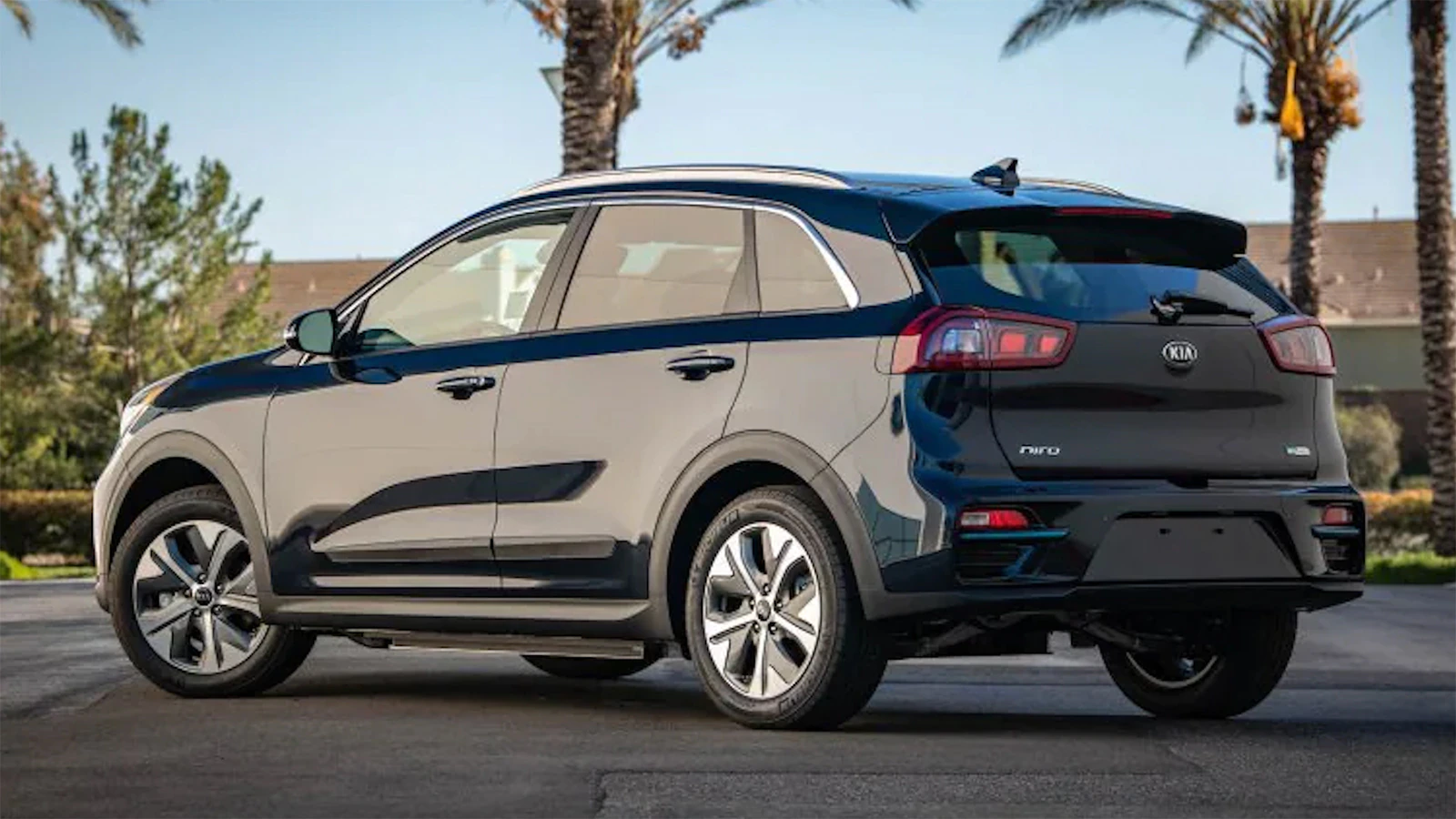
8. Tesla Model 3
The Tesla Model 3 stands out as a practical and cutting-edge electric vehicle that can be used for Uber and Lyft. Its impressive range goes up to 358 miles on a single charge, ensuring ample coverage for long car rides.
The Tesla Model 3 gets its fast-charging capabilities through Tesla’s Supercharger network, allowing the Model 3 to reach 174 miles of range in just 15 minutes.
It features a minimalist and spacious interior design that allows seating up to five passengers. The Model 3 also features a 15-inch touchscreen infotainment system and a 360-degree camera system.
Overall, the Model 3 gives drivers and passengers a smooth, quiet, and comfortable experience.
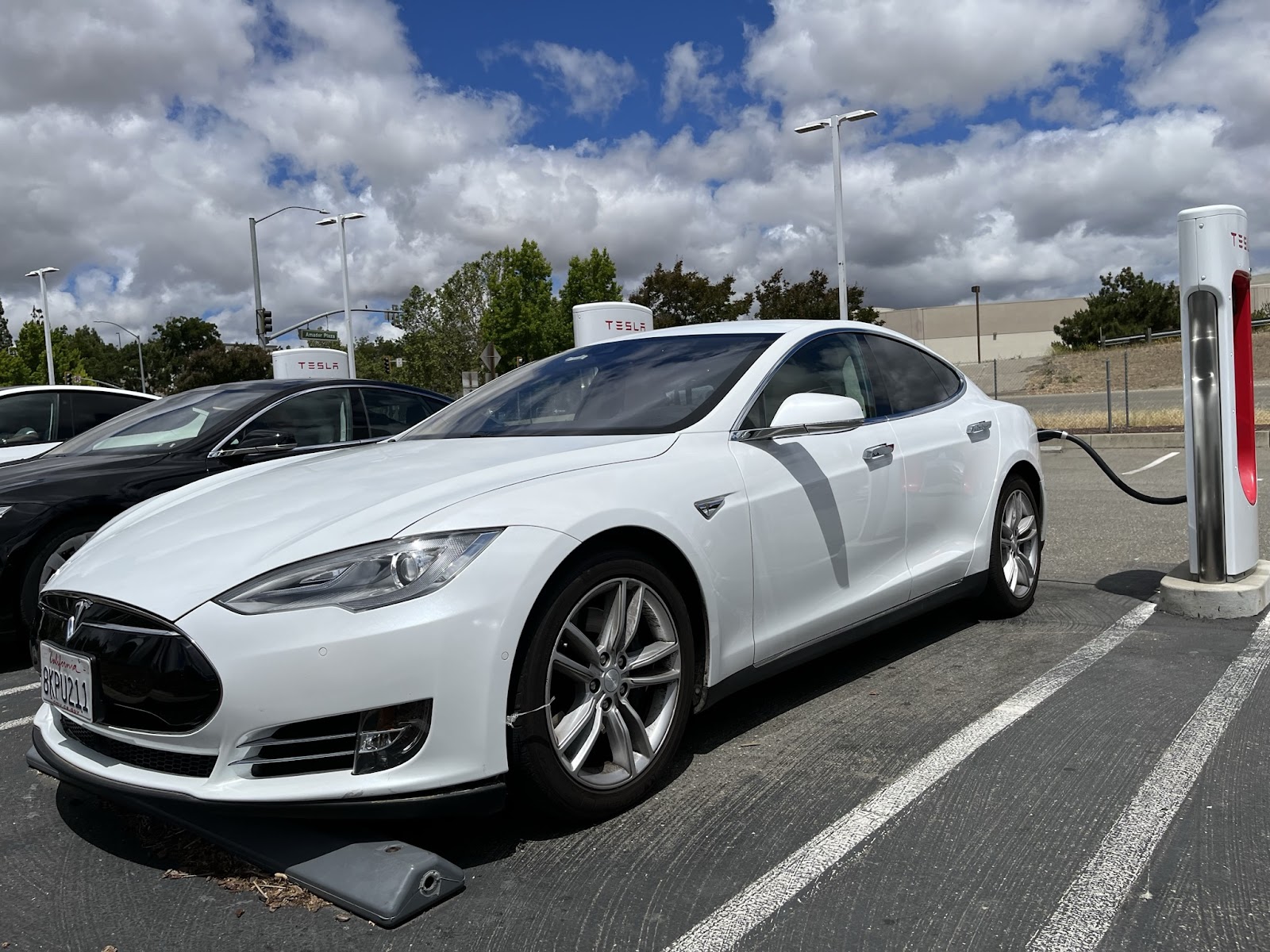
9. Hyundai Ioniq 6
With an impressive 361 miles on a single charge, it’s no doubt the Hyundai Ioniq 6 will be a hot car next year. If you’re lucky enough to find a fast charger, the Ioniq 6 charges from 10% to 80% in 18 minutes. Even without a fast charger, it still charges from 10% to 80% in just under an hour.
The car’s backseats have a fully flat floor, allowing for more legroom for your passengers, and the 12-inch touchscreen display helps you stay safe on the road while still using your Uber and Lyft apps.
Add to that the 120V charging outlets throughout the vehicle, and you’re sure to keep your rideshare passengers happy in this car.
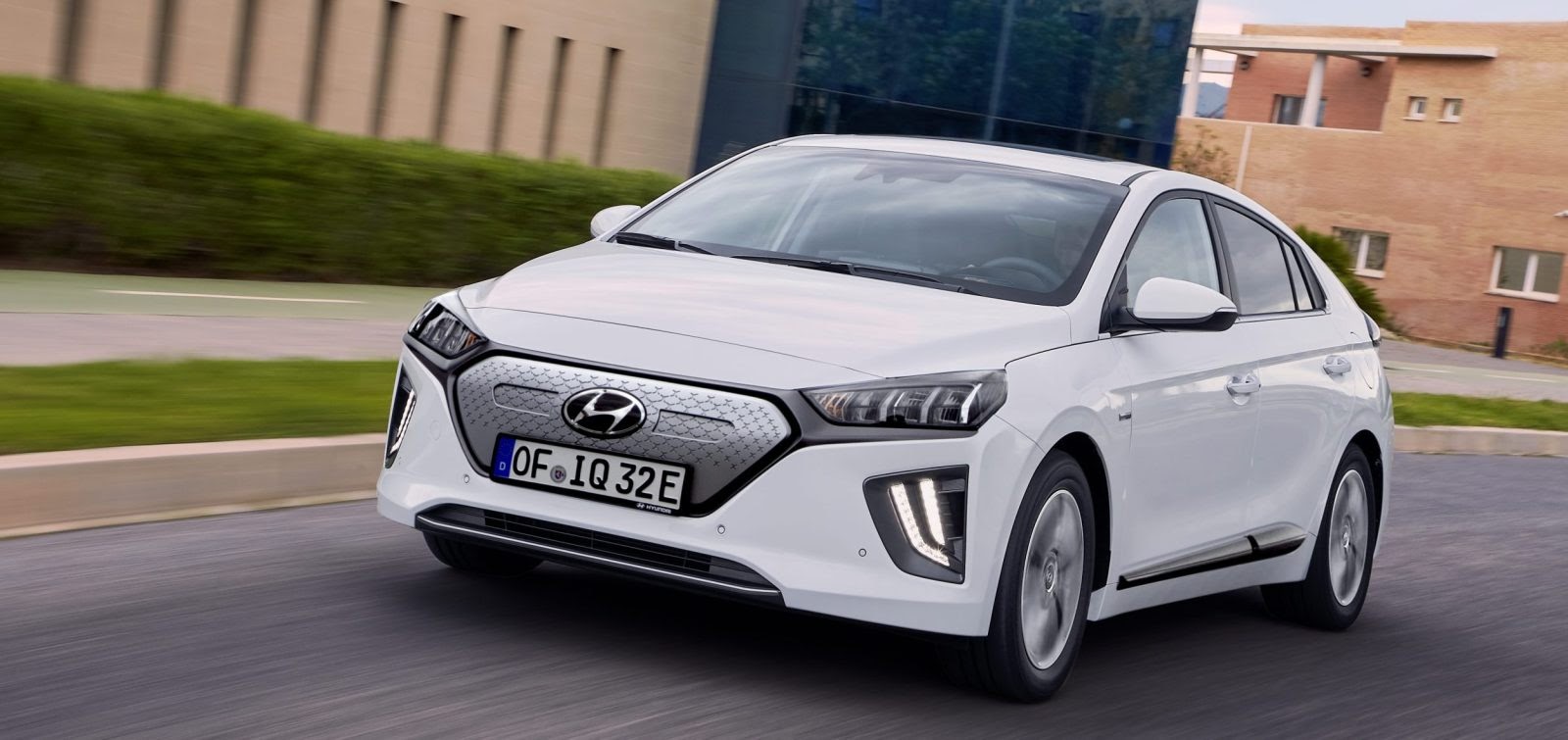
Factors to Consider When Choosing an Electric Vehicle for Uber
When choosing an electric vehicle for Uber or Lyft, there are several factors that drivers should consider. These include range, charging time, cost, passenger comfort, and reliability.
- Range: The range of an EV refers to how far it can travel on a single charge. For Uber drivers, it is important to choose an EV with a long-range, to minimize the number of times you need to stop and charge your car during a shift.
- Charging Time: As an Uber driver you will need to be able to quickly charge your car during your downtime, to maximize your time on the road. Ideally, an EV should be able to charge to 80% capacity in under an hour.
- Cost: While electric vehicles can be more expensive upfront than gas-powered cars, they can save drivers money in the long run. It is important to choose an EV that fits within your budget.
- Passenger Comfort: Choose an EV that is spacious, comfortable, and has amenities such as air conditioning and charging ports.
- Reliability: You will need a car that is dependable and won’t break down frequently. You don’t want your car to spend more time in the shop than out driving.
Related:
- Best Cars for Rideshare Drivers
- Best Cars for Delivery Drivers
- Cheapest Electric Cars for Rideshare & Delivery
Uber Makes It Easy
If you’ve wondered about the cost of electric vehicles, whether or not you would be compensated more for driving an EV, or had questions about electric vehicle incentives, Uber can help!
Uber Comfort Electric is a way for drivers with electric vehicles to earn more money. You’ll be paid higher than typical Comfort rates but slightly under Black car driver earnings.
Uber also features an EV Hub and Charging Map to help drivers plan their working hours seamlessly while getting their vehicles charged. The EV Hub is where you can go to get more information about electric vehicles, like cost, availability of charging stations, and discounts and other incentives for switching over to EVs.
Overall, Uber is making it easier for drivers considering electric vehicles, as they’ll have access to higher earnings and have a one-click hub to find charging stations all within their app.

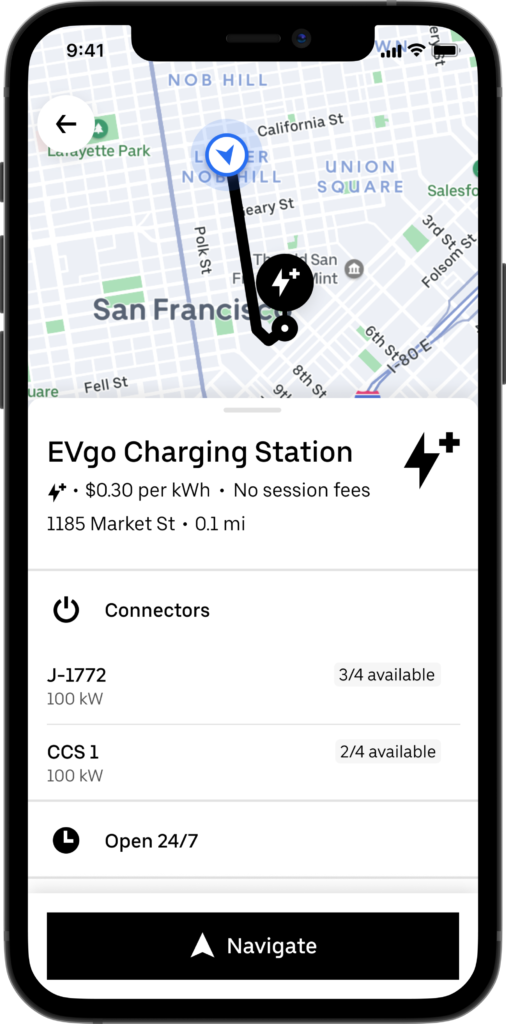
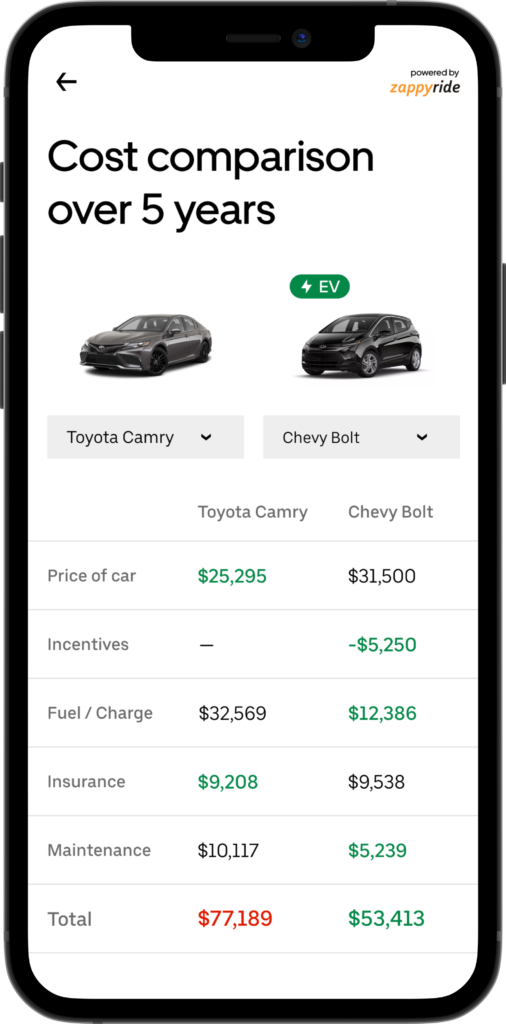
Should You Drive An Electric Vehicle for Uber?
Is doing rideshare in an expensive new EV a good idea? A lot of drivers say “no,” as they view rideshare driving as a job, a job that yields the most profit with minimal up-front spending and operating costs.
Through that lens, spending too much money on your equipment seems frivolous, but there are a lot of drivers—me included—that have other personal or professional needs that maybe justify spending a little more money on a sweet-ass ride.
My calculations show that even though it probably won’t make you more money, it won’t cost too much more and the psychological boost from the added comfort, fun, convenience, and yes, smugness from driving an EV is something you can’t put a dollars-per-mile cost on.
Do you use an EV to drive for rideshare or delivery? Join our Facebook Group for EV gig drivers.


